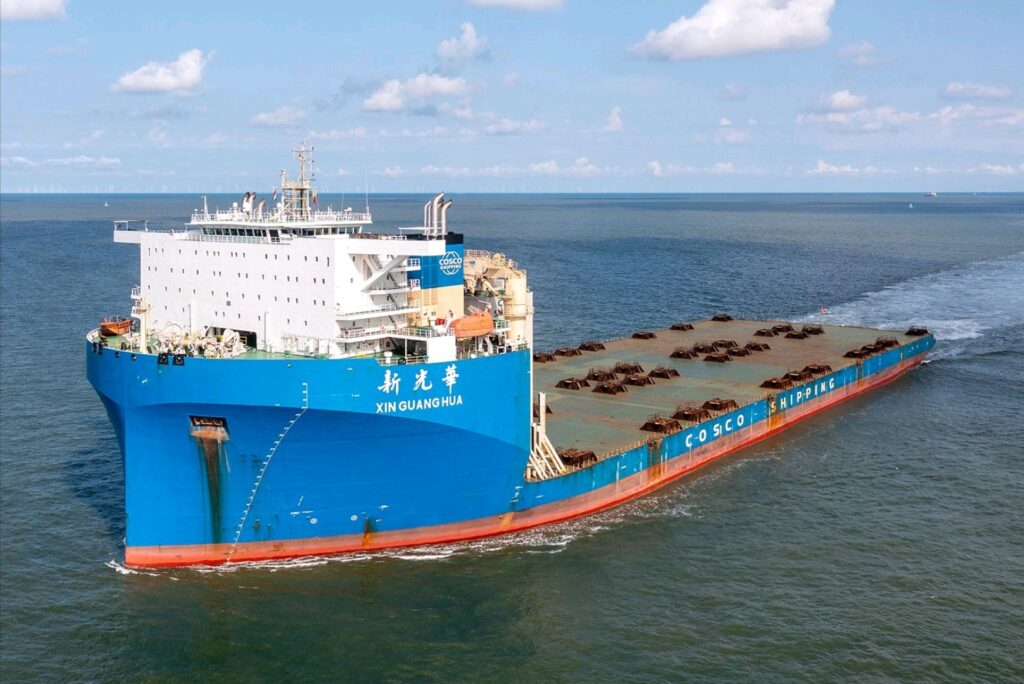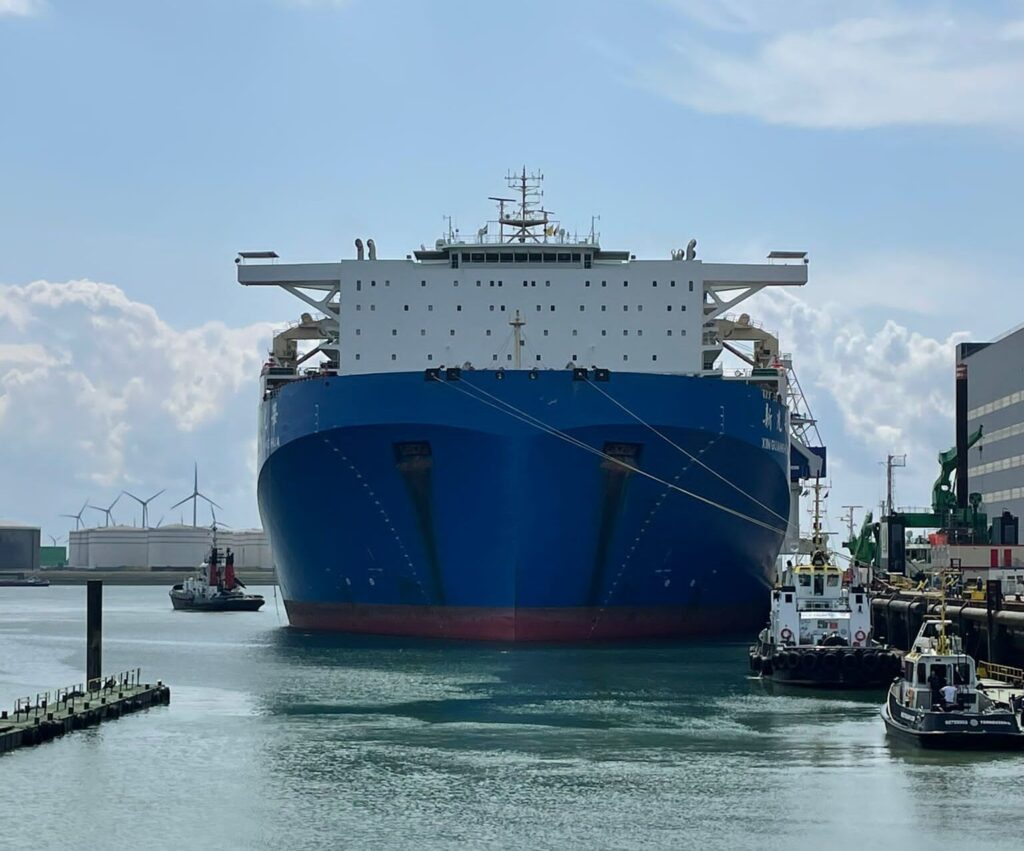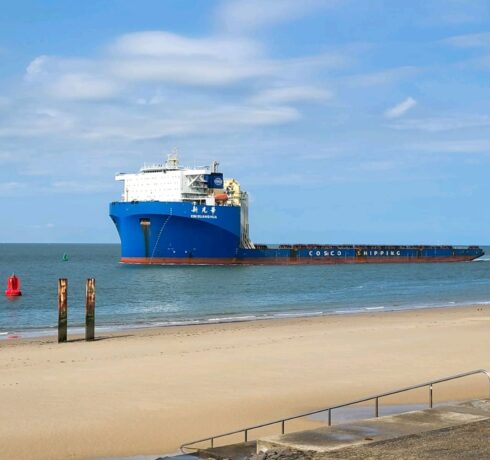Summer 2023 saw the world’s second largest semi-submersible heavy-lift vessel call at Damen Shiprepair Vlissingen for a three-week period of demobilisation activities. “While the work itself was not that complicated, the fact that everything was ‘supersized’ made it a special project,” says DSV Project Manager Maarten Oele.
Maarten is talking about the 255-metre long, 68-metre wide, COSCO Shipping-owned MV Xin Guang Hua. “The ship had just finished a transport project for an offshore wind farm jacket and now came to us for demobilization. This involved the removal of 42 grillages from the deck and the re-positioning of the vessel’s four buoyancy casings.”
Grillages are structures that are welded temporarily to the deck of a ship; they form the basis of seafastening. The ship’s cargo is then fastened (most often welded) to the grillages to keep it in place during transport. The Xin Guang Hua needed to have the 42 grillages, each weighing 32 tons, removed from its deck. This part of the project was carried out by maritime engineering company Van Dam Technics.
 The world's second-largest semi-submersible heavy lift vessel is calling at Damen Shiprepair Vlissingen for a three-week demobilisation period. Photo: maritimephoto.com
The world's second-largest semi-submersible heavy lift vessel is calling at Damen Shiprepair Vlissingen for a three-week demobilisation period. Photo: maritimephoto.com
The next part of the work was that the vessel’s four buoyancy casings had to be moved back to their original position at the stern of the ship. “These had been placed just behind the ship’s accommodation to free up deck space for its previous job,” explains Maarten. The buoyancy casings maintain the stability of the ship during submersion and transport.
The repositioning of the buoyancy casings involved further cooperation between Van Dam – coordinating the lifting and transport – and DSV which carried out the fitting and welding of the casings.
“Each casing was 26 metres high and weighed 400 tons – so for this task Van Dam contracted the floating sheerleg Matador 3 to carry out the lifting work. However, because the Xin Guang Hua is so wide, we had to turn the ship around halfway through to make sure that the Matador 3 could get proper access.”
 The Xin Guang Hua at the quay in Vlissingen-Oost.
The Xin Guang Hua at the quay in Vlissingen-Oost.
Once the buoyancy casings were back in position, the DSV team could start with welding them securely to the deck. And once again, the Xin Guang Hua proved itself to be a mammoth job: “We had 600 metres of welding to do,” Maarten adds. “However, because we had to perform multiple-layered welds, the total length came to around 10 kilometres of welding! And on top of that, we then had to carry out MPI testing of all the welds, which took another two days.” MPI – or Magnetic Particle Inspection – is a non-destructive testing process for detecting surface and subsurface anomalies in ferrous materials.
After its arrival on 21 July, the Xin Guang Hua departed DSV on 14 August. “Everything on this project – especially the lifts and the welding – was big. After all, lifting 400 tons and welding 10 kilometres is not something we do every day,” concludes Maarten. “Small note, our scope was limited to fitting and welding of the casings. The lifting and transport, done by Matador3, was arranged by Van Dam.”

